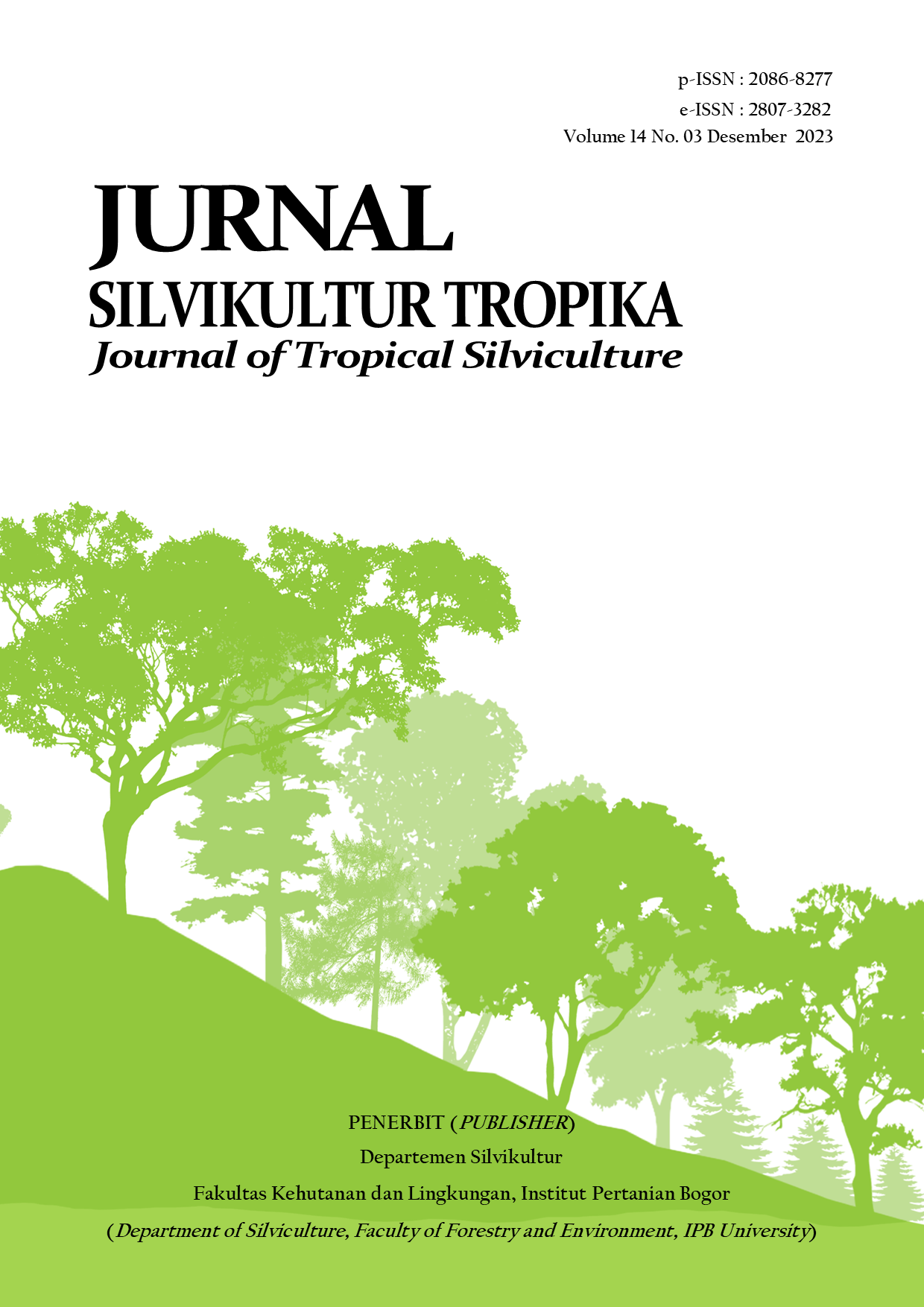Kelimpahan Fauna Tanah dan Hubungannya dengan Karakteristik Tapak pada Vegetasi Submontana di Taman Nasional Gunung Gede Pangrango
Abstract
Soil fauna is a biotic soil component that can be used as fertility bio-indicators. This altitude difference is thought to affect the soil fauna. This research aims to identify differences in the abundance of soil mesofauna and macrofauna at the study site and to analyze the relationship between climatic and edaphic factors. Sampling measuring 20 m x 20 m was placed by purposive sampling at 1.250, 1.350, 1.450 m asl, and open area (1.200 m asl) for vegetation analysis and subplots were carried out by purposive sampling on three sample subplots measuring (1 m x 1 m) for soil samples and environmental factors. The highest soil fauna was found at an altitude of 1.350 m asl (265 individual / m2) and the lowest was in the open area (11 individual / m2). The different test results showed that the altitude of 1.250 and 1.450 m asl was not significantly different, while the altitude of 1.350 m asl and in open area showed a significant difference. The relationship between the population of soil fauna and climatic factors such as ambient temperature and sunlight intensity has a negative correlation value, while humidity shows a positive correlation value. Edaphic factors such as pH, and cation exchange capacity, have negative correlation, while litter weight, respiration, and soil porosity show positive correlation values.
Keywords: climatic, edaphic, population, soil fauna, submontane










